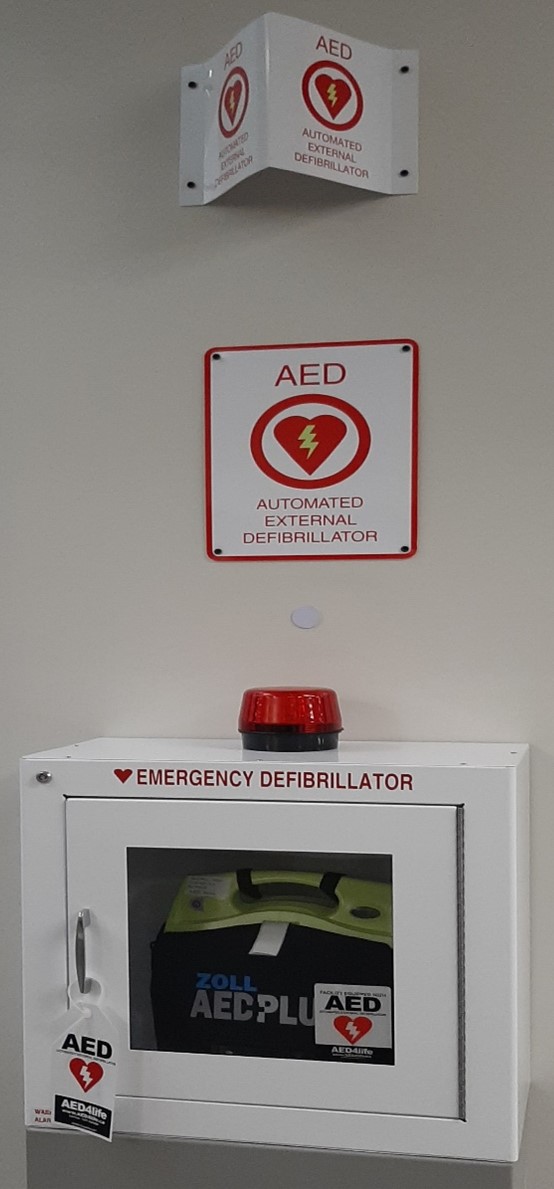An AED stands for Automated External Defibrillator. These portable and battery-operated devices can save a life for someone who is in cardiac arrest, but every minute counts.
Nowadays you can find them in shopping malls, airports, government buildings and community centres. Humber College has about 85 devices throughout all its sites: 53 at North Campus, 24 at Lakeshore campus, plus additional units in all five Community Employment Service locations and three at the new International Graduate School.
In a cardiac emergency, every minute before using an AED could mean the difference between life or death. AEDs can be used by anyone. By following AEDs audio/visual prompts, it makes it easy and safe to use so that lives can be saved. These AEDs are most effective when used by trained individuals. Those with Standard First Aid/CPR training have also been trained on using an AED. The AED unit checks a victim’s heart rhythm and delivers an electric shock only if it determines that defibrillation is required to restore the heart’s normal rhythm.
By having AEDs highly visible and readily available at all sites, it allows the College to be better equipped in the event there is a cardiac emergency. At your next staff meeting, why not review where the closest AED is to your workspace, and who is trained on how to use it? You can even use the Campus Compass app to find the closest AED by clicking on "Explore maps & floors".
This post is brought to you by Humber’s Joint Occupational Health and Safety Committee (JOHSC). For information about the JOHSC at your site, meeting dates, workplace inspection schedules, or the contact information of the committee members, visit our website.

